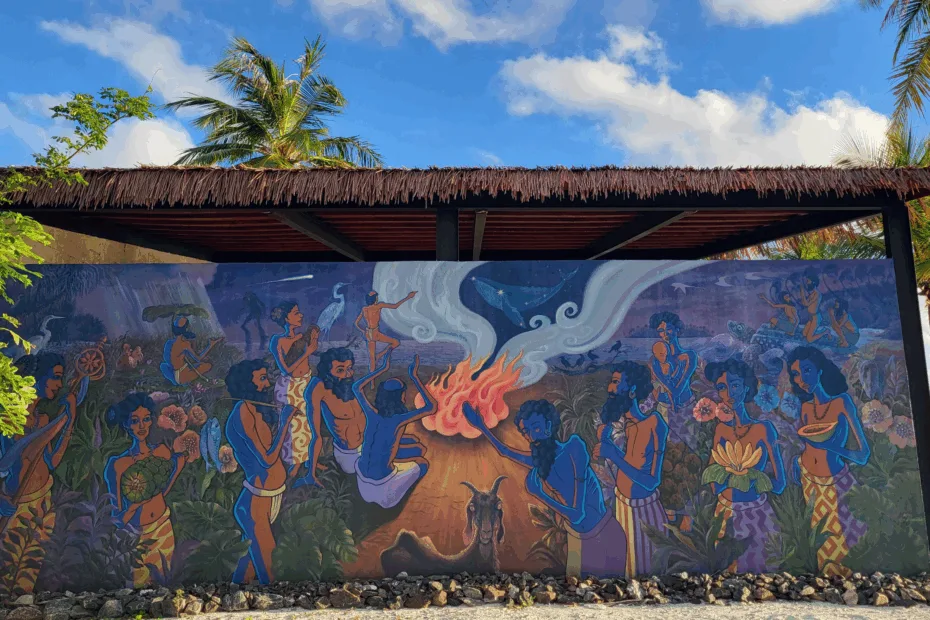Guest blog by Eduardo Saravia, Chief Economist at Sound Diplomacy and member of UNESCO Expert Facilities. Eduardo is part of the Global Creative Economy Council. The opinions are those of the author and do not necessarily represent the views of Creative PEC.
Tourism contributes around 10% of global GDP and supports one in every ten jobs worldwide, reflecting its pivotal role in economic development (World Bank, 2024). Yet, this impressive scale also underscores a global vulnerability: overreliance on tourism leaves economies exposed to cycles of demand, climatic shocks, and geopolitical volatility.
At the national level, diversification is not just prudent; it is essential. In the Maldives, tourism continues to dominate the economy and labour market. According to the World Travel & Tourism Council (WTTC), in 2023, the direct contribution of travel and tourism to GDP was MVR 26.66 billion, equivalent to 24.2 % of national GDP. In the same year, the sector directly supported 30.9 % of total employment, representing approximately 80,930 jobs, while its total contribution (including indirect effects) reached 76.8 % of all jobs in the country (WTTC, 2024).
Tourism continues to be the dominant force in the Maldivian economy, and this dominance presents a strategic opportunity: with millions of visitors arriving annually, the country already hosts a built-in demand for high-quality, meaningful, and culturally rich experiences. These visitors represent an untapped audience for creative goods and services, ranging from crafts, design, and performing arts to local storytelling and digital content. To fully capitalise on this potential, it is essential to build a creative economy that can serve this demand and generate new avenues for growth.
In this context, the Policy Roundtable on Economic Diversification Diversification led by the Asian Development Bank and the Maldivian Ministry of Economic Development and Trade, brought together government officials, private sector actors, and regional and international experts to reflect on how the Maldives can activate its creative economy. The dialogue sought to inform a broader economic diversification strategy in which the creative economy plays a central role, leveraging the country’s tourism and economic development sectors as key components of the ecosystem, and as potential allies and platforms for fostering creative entrepreneurship, generating new funding streams, and building a stronger cultural identity.
During the Roundtable, several international case studies were presented, including examples from the Philippines, Sri Lanka, and Colombia, each illustrating how targeted public policy can catalyse creative sector growth.
Strategic use of ticket levies
A standout example was Colombia, where targeted regulation has driven a dramatic revival in its national film industry. In 2003, Colombia enacted Law 814 (the Film Law), creating the Cinematographic Development Fund (FDC), a parafiscal levy on ticket sales collected from exhibitors and distributors. Managed by Proimágenes Colombia and the National Council for Arts and Culture in Cinematography, this mechanism has supported sustained growth in the country’s audiovisual sector.
In 2023, Colombia premiered 71 national films in theatres, the highest number on record, with a significant share of these titles participating in or winning awards at major international festivals such as Cannes, Venice, and San Sebastián (Proimágenes Colombia, 2023).
Complementing this Colombia’s Public Shows Law (Law 1493 of 2011) introduced a 10 % parafiscal levy on ticket sales for large live performance events, with funds collected by the Ministry of Culture and allocated to local governments to support infrastructure, production, and circulation of performing arts in municipalities (Ministerio de Cultura, 2022).
These complementary reforms demonstrate the amplified impact of aligned legal frameworks and financial instruments across cultural domains. Colombia’s experience shows how a long-term vision, supported by both public and private actors and grounded in effective financing mechanisms, can lead to resilient creative ecosystems and vibrant cultural outputs. Such initiatives have proven particularly effective when aligned with sector needs and built through collaboration with private stakeholders. However, they are only part of a broader equation. Achieving long-term impact also requires a deliberate commitment to cross-ministerial policy coordination and the strategic alignment of cultural objectives with national development goals.
Cross-departmental working
In the case of the Maldives, a key challenge lies in promoting shared agendas across different ministries, and leveraging the country’s institutional framework to develop joint cultural and creative economy initiatives. In particular strong collaboration between the Ministry of Economic Development, the Ministry of Tourism, and the Ministry of Arts, Culture and Heritage will be essential. One medium-term opportunity could involve designing funding mechanisms to support culture and creativity, capitalising on the Maldives’ already well-established tourism sector as a platform for mobilizing and channelling such resources.
Addressing data gaps
In parallel, one of the critical gaps that must be addressed is the absence of systematic data on the cultural and creative sectors. Establishing a statistical foundation, through cultural mapping, satellite accounts, or targeted sectoral surveys, would allow the government to define reliable KPIs and realistic policy targets, which are essential for measuring impact, guiding investment, and strengthening accountability.
The discussions held during the Policy Roundtable reaffirmed that cultural and creative industries are not peripheral to development; they are integral to building diversified, resilient, and inclusive economies. For the Maldives, the path forward involves translating the country’s cultural assets and existing tourism demand into sustainable economic opportunities through strategic investment, inter-ministerial coordination, and stakeholder engagement. International experiences show that long-term vision, dedicated funding mechanisms, and robust data systems are foundational pillars of creative economy development. As the Maldives moves toward articulating a national strategy for the sector, these principles can guide the design of a context-specific roadmap, one that positions culture not only as a reflection of identity but also as a driver of innovation and shared prosperity.
Image by Genevieve Pace. Oaga Art Resort collaborates with Maldivian artists and craftsmen, ensuring the resort features the largest art collection in the Maldives. The artwork is inspired by Maldivian folklore, mythology, and daily life, offering guests an immersive experience into the island’s rich heritage.
